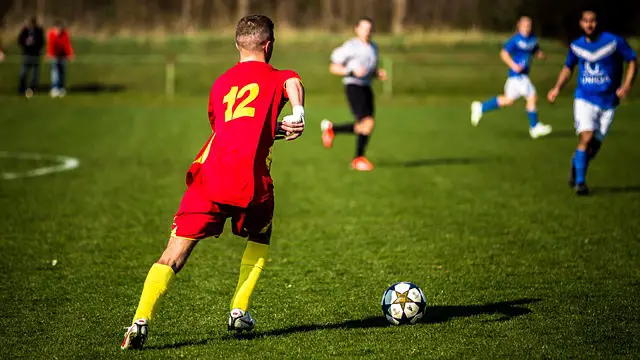Let’s talk about how weather conditions can have a significant impact on the tactics used in soccer. When the weather takes a turn, whether it’s a scorching heat, pouring rain, or blistering cold, the game can completely change.
From altering the pace of the game to affecting player endurance and strategy, these conditions demand adjustments that can make or break a team’s performance.
In this article, we’ll explore the nuances of weather’s influence on soccer tactics and how teams adapt to overcome these challenging situations. So, let’s get started and uncover the secrets behind conquering the elements in the beautiful game.
1. Temperature
1.1. Hot weather
Hot weather can have a significant impact on a soccer game. When playing in high temperatures, players can quickly become fatigued and dehydrated. The heat can affect their performance, making them slower and less sharp on the field.
In hot weather, players may need to take more frequent water breaks and adjust their playing style to conserve energy. Additionally, the risk of heatstroke and other heat-related illnesses increases, so it is crucial for players to take proper precautions and stay hydrated.
1.2. Cold weather
Playing soccer in cold weather presents its own set of challenges. Low temperatures can affect a player’s overall comfort and limit their range of motion. Cold muscles are more prone to injuries, so players must ensure they warm up properly before the game.
The ball may also become harder and less responsive in colder weather, making it more difficult for players to control and pass accurately. Furthermore, playing in cold weather can affect a player’s mental focus, as they must constantly battle against the discomfort and distractions caused by the temperature.
1.3. Extreme temperatures
Extreme temperatures, whether excessively hot or cold, can have a severe impact on the safety and performance of players. In extreme heat, the risk of heat exhaustion and heatstroke becomes even higher. On the other hand, extreme cold can lead to frostbite and other cold-related injuries.
In such conditions, it may be necessary to adjust game schedules or even cancel matches to prioritize the safety of the players. Extreme temperatures can also affect the behavior of the ball, making it unpredictable and challenging to control.
Players must adapt their tactics accordingly and listen to the guidance of their coaches and referees.
2. Precipitation
2.1. Rain
Rainy conditions can significantly alter the dynamics of a soccer game. The wet surface makes the pitch slippery, which affects players’ movement and stability. It becomes more challenging to maintain balance, change directions quickly, and execute precise movements.
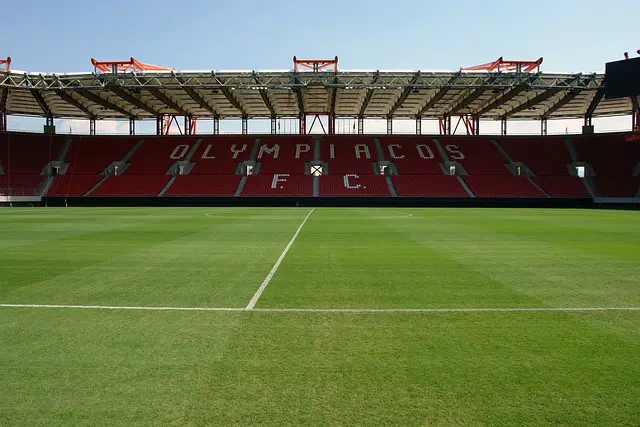
In addition to the physical challenges, the ball becomes heavier and can skid or bounce unpredictably. Players must adjust their passing and shooting techniques to account for the slippery conditions. Additionally, teams may need to adopt a more direct and less intricate style of play to minimize the risk of mistakes caused by the rain.
2.2. Snow
Playing soccer in snowy conditions brings its own unique challenges. The snowy surface can make it difficult to see the lines and markings on the pitch, affecting players’ spatial awareness. The ball may also get obscured, making it harder to follow its trajectory.
Running and control become more challenging due to the increased resistance of moving through the snow. Players might need to use longer studs or even switch to shoes specifically designed for snow to gain better traction. Snowy conditions often lead to a slower and more physical game, as the emphasis shifts towards strength and direct play.
2.3. Hail
While less common, hail during a soccer match can pose safety risks for players. Hailstones can be large and heavy, increasing the likelihood of injuries if players are hit. Matches are typically halted or delayed during hailstorms to protect the players.
The impact of hailstones on the pitch can also affect the ball’s behavior, making it challenging to anticipate its movements. Once the hailstorm has passed, ground conditions may become muddy and slippery, requiring players to adapt their tactics accordingly.
3. Wind
3.1. Strong wind
Strong winds have a significant effect on the trajectory and speed of both the ball and players. The wind can carry the ball further or alter its path mid-air, making it challenging to predict and control. Long passes and shots may require adjustments to compensate for the wind. Wind can also pose a challenge in terms of players’ movement.
Running directly against a strong headwind can slow down players, while a tailwind can enhance their speed. Teams need to be aware of the wind direction and adjust their tactics accordingly, utilizing the wind’s strength to their advantage or minimizing its impact on their game.
3.2. Crosswind
A crosswind blowing across the field can pose challenges for players. Passing the ball accurately becomes more difficult as the wind may deflect or carry it away from the intended target. Players need to adjust their passing angles and take into account the potential effect of the crosswind.
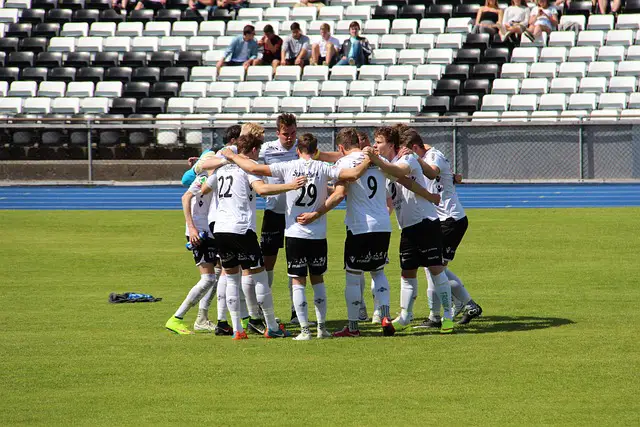
Additionally, sudden gusts of wind can affect the ball’s trajectory during high passes and crosses, making them harder to control. Teams may need to focus on shorter, precision passes to maintain better control of the ball in crosswind conditions.
3.3. Headwind/Tailwind
Playing with a headwind or tailwind can significantly impact a game’s flow and strategy. A headwind can impede the ball’s progress when playing long passes or taking shots from a distance. Teams may need to adjust their tactics to favor shorter passing combinations and build-up play.
On the other hand, a tailwind can provide an advantage in terms of the ball’s speed and distance covered. Teams may choose to take advantage of this by playing more direct balls or attempting long shots to capitalize on the wind assistance.
4. Humidity
4.1. High humidity
High humidity can make playing soccer uncomfortable and physically taxing. The increased moisture in the air hinders the body’s ability to cool down through sweat evaporation, leading to a higher risk of heat-related illnesses. Sweat doesn’t evaporate effectively in high humidity, so players may feel sticky and weighed down, affecting their agility and speed.
Breathing can also become more difficult in humid conditions, especially for players with respiratory issues. It is crucial for players to stay properly hydrated and take breaks when necessary to avoid exhaustion and dehydration.
4.2. Changes in ball control
Humidity can also affect the ball’s behavior on the pitch. In high humidity, the ball becomes heavier and less responsive, making it more challenging to control and manipulate. Dribbling and close ball control may suffer, as the surface of the ball accumulates moisture, affecting grip and touch.
Passing and shooting accuracy can also be impacted, as the ball’s flight path can become less predictable. Players must adjust their technique and be more cautious when executing technical maneuvers in high humidity conditions.
4.3. Impact on player endurance
High humidity can decrease players’ endurance and overall performance. The combination of hot weather and moisture in the air can lead to faster physical fatigue and decreased stamina. Players may find it more difficult to maintain a high work rate throughout the game, as their bodies absorb and retain heat more readily.
Coaches and teams need to be mindful of this and consider making tactical substitutions or adjusting the pace of the game to account for the reduced endurance caused by humid conditions.
5. Visibility
5.1. Fog
Foggy conditions can significantly impact visibility on the soccer field. Players and referees may struggle to see the entire pitch, affecting their ability to anticipate movements and make accurate judgments. Passing accuracy can also be adversely affected, as players may have difficulty spotting their teammates and opponents.
Teams need to rely more on verbal communication and adapt their game plan to focus on shorter, controlled passes. Additionally, long-range shots and cross-field passes may need to be avoided or executed with caution due to the potential for misjudgments caused by limited visibility.
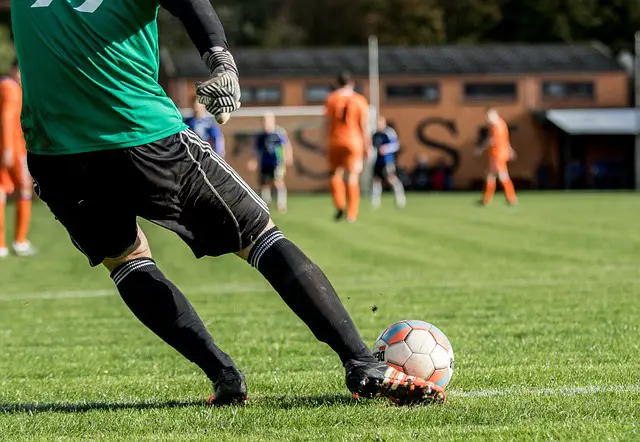
5.2. Heavy rain
Heavy rain can create a curtain of water that reduces visibility on the field. Similar to fog, players may struggle to see the ball, their teammates, and opponents clearly. This can make accurate passing and shooting more challenging.
The ball may also become more difficult to control due to the waterlogged surface. Teams may need to adjust their tactics to prioritize short, quick passes and maintain a tighter formation to compensate for the reduced visibility caused by heavy rain.
5.3. Dark/Dim lighting
Poor lighting conditions can make it challenging for players to see the field and the ball accurately. Shadows and inadequate lighting can affect depth perception, making it harder to judge the trajectory and speed of the ball.
Passing accuracy and decision making can be compromised in dim lighting, leading to more turnovers and less effective play. Teams may need to focus on simpler, more direct strategies that do not rely heavily on complex visual cues when playing in dark or dimly lit stadiums.
6. Surface Conditions
6.1. Wet/damp pitch
Playing on a wet or damp pitch introduces additional challenges for soccer players. The surface becomes slippery, making sharp turns and sudden changes in direction more difficult. Players need to adjust their footing and consider using longer studs or specific footwear for better traction.
The ball’s behavior can also change, becoming heavier and harder to control. Short, intricate passing combinations may be more challenging, requiring teams to adapt their tactics to favor more direct play that minimizes the risk of losing control due to the wet surface.
6.2. Grass length
Different grass lengths can have an impact on the game of soccer. Shorter grass allows for faster ball movement and smoother passing and shooting. It also facilitates a quicker pace of play. Conversely, longer grass can slow down the ball and make it more difficult to play quick, ground passes.
It may also affect the way the ball rolls, making it harder to predict its path and adjust accordingly. Teams need to analyze and adapt to the grass length to optimize their tactics and style of play for each specific field.
6.3. Artificial turf
Playing on artificial turf presents its own unique challenges. The ball’s bounce and roll on artificial turf can be significantly different from natural grass, affecting players’ anticipation and control. The surface can also be harder and less forgiving, increasing the risk of injuries from falls and collisions.
The increased traction of artificial turf may affect players’ mobility and change the dynamics of the game. Teams need to adapt their tactics accordingly, accounting for the unique characteristics of artificial turf and the potential impact on ball control and player movement.
7. Extremes
7.1. Extreme heat
Extreme heat poses substantial risks to the health and safety of players. Playing in excessively high temperatures can lead to heat exhaustion, heatstroke, and dehydration. It is crucial to monitor players closely and provide frequent hydration breaks. The physical demands placed on players are heightened in extreme heat, with fatigue setting in at a quicker pace.
Coaches may need to adjust their tactics to account for the reduced stamina and energy levels of the players. Strategies that encourage ball possession and slower build-up play may be more effective in extreme heat.
7.2. Extreme cold
Playing in extreme cold can be challenging and uncomfortable for soccer players. Cold temperatures can restrict movement, making it harder to perform quick turns and explosive movements. Injuries are more likely to occur due to the lower flexibility and increased muscle tightness caused by the cold.
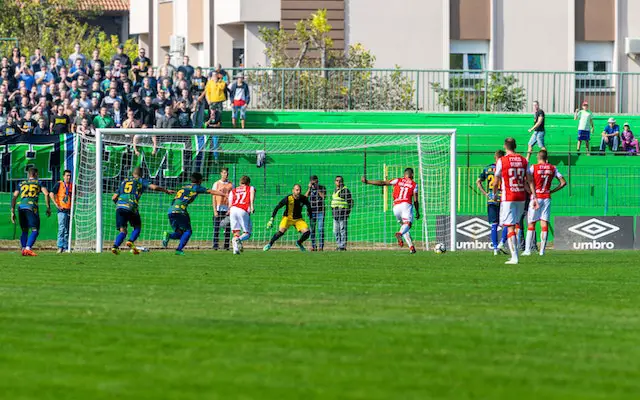
The ball may also become harder and less responsive, making control and passing more difficult. Players need to focus on proper warm-up routines and wear appropriate clothing to maintain their body temperature. Tactical adaptations may include a greater emphasis on short and simple passes to minimize mistakes caused by the cold.
7.3. Heavy rain or extreme weather
Matches played in heavy rain or extreme weather conditions pose significant safety risks. Lightning, strong winds, and flooding can all jeopardize the well-being of players. In such circumstances, it is crucial to prioritize the safety of the athletes and consider postponing or canceling the game.
Heavy rain can also lead to waterlogged pitches, affecting the ball’s behavior and players’ movements. Teams must be prepared to adapt their tactics and style of play to accommodate the challenges presented by extreme weather.
8. Game Time Considerations
8.1. Pre-match preparations
Considerations before a soccer game involve assessing the prevailing weather conditions and their potential impact on the match. Coaches and players need to plan accordingly, taking into account factors such as temperature, precipitation, wind, humidity, and visibility.
Adequate hydration and warm-up routines become even more important in adverse weather conditions. Ensuring that players are mentally and physically prepared for the challenges they may face is crucial for optimizing performance and preventing injuries.
8.2. In-game adjustments
During the game, teams need to be adaptable and reactive to the changing weather conditions. Coaches should closely monitor the impact of the weather on the players’ performance and adjust tactics as needed.
Assessing the ball’s behavior and players’ ability to control it becomes essential in adverse weather conditions. Strategies may need to be altered, emphasizing shorter passes, simpler play, and increased physicality, depending on factors such as temperature, wind, and precipitation.
8.3. Substitutions and player roles
Extreme weather conditions can significantly affect player endurance and performance. Coaches may need to make tactical substitutions to maintain the team’s energy levels and adapt to the specific challenges posed by the weather.
Players who are less resilient to adverse weather conditions or who are bringing a particular skill set that aligns with the changing dynamics of the game may be strategically substituted. Adjusting player roles and positions may also be necessary to optimize performance in challenging weather conditions.
9. Psychological Impact
9.1. Mental readiness
Weather conditions can have a psychological impact on players. Adverse weather can disrupt focus and create distractions, affecting players’ mental readiness. The discomfort caused by extreme temperatures, wind, or poor visibility can lead to frustration and decreased motivation.
Maintaining mental readiness despite challenging conditions becomes crucial for staying focused and performing at a high level. Teams should foster a positive and resilient mindset, emphasizing adaptability and maintaining composure in the face of adverse weather conditions.
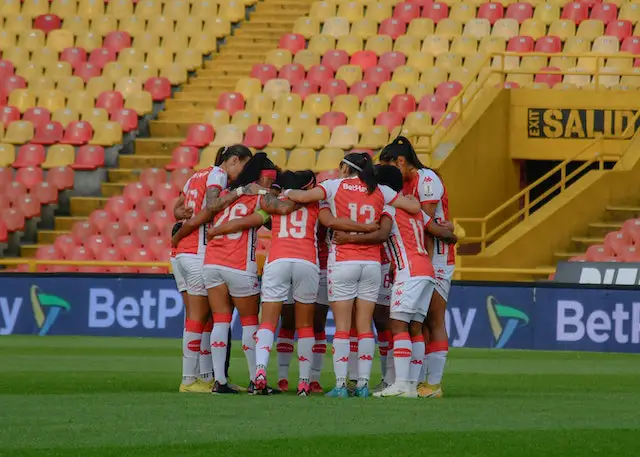
9.2. Player motivation
Weather conditions can test a player’s motivation and determination. Adverse weather, such as extreme heat or heavy rain, can make the game more physically demanding and uncomfortable. Maintaining motivation and a strong work ethic despite these challenges can set successful teams apart.
Coaches should encourage and support their players, emphasizing the importance of mental toughness and positive motivation. Team unity, shared goals, and a strong sense of camaraderie can also help players remain motivated and perform at their best in difficult weather conditions.
9.3. Mental fatigue
Playing in adverse weather conditions can lead to mental fatigue. The physical demands and discomfort caused by extreme temperatures, wind, or precipitation can take a toll on a player’s mental stamina.
Decision making and concentration may be compromised, leading to errors and lapses in performance. Coaches need to be aware of the potential for mental fatigue and adjust their coaching strategies accordingly. Providing regular breaks, implementing effective rotations, and fostering a supportive team environment can help combat mental fatigue.
10. Tactical Adaptations
10.1. Changing formations
Adapting formations is essential to optimize performance in different weather conditions. Teams may opt for more defensive formations to counter strong winds or slippery pitches. Alternatively, in extreme heat or humidity, a team may choose to use wider formations that allow for more rest and recovery.
Formations can be modified to maximize the strengths of individual players in adverse conditions while minimizing weaknesses. Coaches must analyze the impact of weather on the game and adjust formations accordingly to ensure strategic advantages.
10.2. Adjusting passing and shooting
Weather conditions necessitate alterations in passing and shooting techniques. In windy conditions, shorter and more precise passes may be a better option than long balls that can be easily affected by the wind.
Shooting techniques may need to be adjusted to account for the ball’s behavior, such as shooting low and hard in wet or snowy conditions. Teams need to practice and develop various passing and shooting strategies that accommodate the unpredictable nature of the ball in different weather conditions.
10.3. Defensive approach
Weather conditions often require a defensive approach that prioritizes stability and minimizes mistakes. Adverse conditions can make it more challenging to maintain possession and execute complex attacking maneuvers.
Teams may choose to adopt a more physically robust and direct style of play that focuses on high-pressure defense and quick counterattacks. A strong defensive approach can help mitigate the risks associated with adverse weather conditions and capitalize on mistakes made by the opposing team.
Conclusion
In conclusion, weather conditions significantly impact soccer tactics. From temperature to precipitation, wind, humidity, visibility, surface conditions, and extremes, each factor presents its own challenges and necessitates tactical adaptations.
Coaches and players must carefully assess and adapt to the prevailing weather conditions to optimize performance, prevent injuries, and maximize their chances of success on the field.
By understanding and accounting for the effects of weather, teams can develop strategies that leverage opportunities and minimize vulnerabilities, ultimately enhancing their chances of achieving their goals in any weather.

